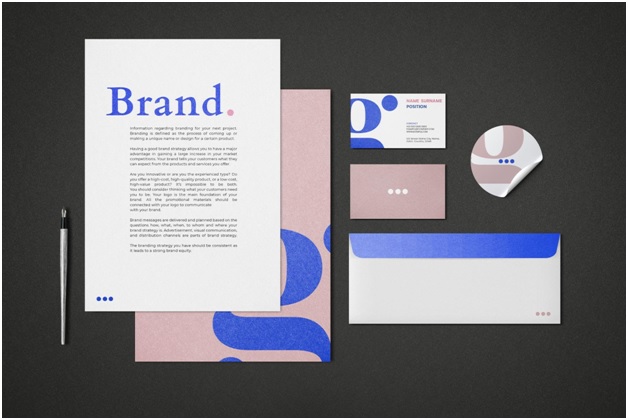Perfect examples of a strong fashion brand identity are without a doubt fashion brands such as Nike, Chanel, Levi’s, Dior, and Louis Vuitton, to name a few. These are the brands anyone would recognize no matter where they are.


To be able to do the same for your own fashion business, you need to develop a brand strategy, get to know your target audience, and know exactly what message you want your brand to communicate. But that’s not all, there are also additional steps to creating a strong brand identity.
If you want to find out more, you are in the right place because we made a little guide to help you create a brand identity for your new fashion business. Let’s take a look.
1. Develop a brand strategy
To create a strong brand identity, you need to start by developing a good brand strategy. A strategy or a plan will help you stay on course without feeling stuck or feeling like you’re going in the wrong direction.
Start by determining your goal – what do you want to achieve and how much time do you think you’ll need? When creating a brand identity, start by making small goals that you can achieve in a given timeframe. Consistency is the key when it comes to a good brand strategy.
Remember that the whole point of developing a brand strategy is to be different from your competitors and to be able to come up with a strong brand identity.
2. How do you want your brand to be perceived
There are two sides to creating brand identity. One side is visuals and the other side is communication. In most cases, visuals are not the problem. What you should concentrate your efforts on is how you want your brand to be perceived.
Do you want to be a family fashion brand, a customized fashion brand, a sports fashion brand, a luxury fashion brand, or maybe a mix of these two or three? If let’s say, you want to sell custom sportswear, you’ll need to find a way to convey the right message.
To be able to convey the right message, you’ll need to analyze and research the brand’s logo, message, personality, values, and ethics, as well as the mission. Aligning all of these won’t be easy, but it will be worth it in the end.
3. Research target audience and competition
Another very important step when creating a brand identity includes researching and identifying your target audiences and competition. Identifying your audience is crucial because you want to create a brand and products that customers would buy.
To be able to identify your target audience, you will also need to create a buyer persona. A buyer persona is a concept that represents your brand’s ideal customer. So, imagine your ideal customers and inquire about them. Questions such as age, sex, salary, and other similar questions will give you an idea about who these people are, their lifestyle, what they enjoy, and so on.
Besides identifying your target customers, you’ll also need to research your competitors. Understanding what your competition is doing will help you figure out what audience are they targeting, what’s their approach and what makes them successful, among other things.
4. Design visuals
Now comes the fun part – designing visuals such as logos, colors, imagery, and so on. As we mentioned, this, together with communication is the main ingredient of creating a strong brand identity.
Visuals are very important because they are the first thing your audience sees. That means that they are very influential and as such, they need to look the part. With visuals, you want to deliver a certain kind of message, so you need to be careful when choosing a logo and colors for your brand.
Your brand’s logo is a symbol that should represent your brand and its products/services. The logo is usually comprised of images, colors, and words. To be able to create a good logo, you need to make it distinctive but simple, memorable, timeless, and versatile. A logo that will convey your fashion brand’s message.
When it comes to color, you should always opt for colors that evoke strong emotions. Every color can do this, but only certain colors evoke trust and calm, cleanliness, and so on. The best option is to have 5 to 6 colors (1 main color, 2 primary colors, 3-5 complementary, and 2 accent colors).
Typography is also something to take into consideration. When it comes to it, try to stick to simple and understandable fonts.
Creating a strong brand identity is a process that takes planning, research, as well as time. You shouldn’t rush this process. Instead, try your best to create a distinct brand identity that will be timeless and scalable.








